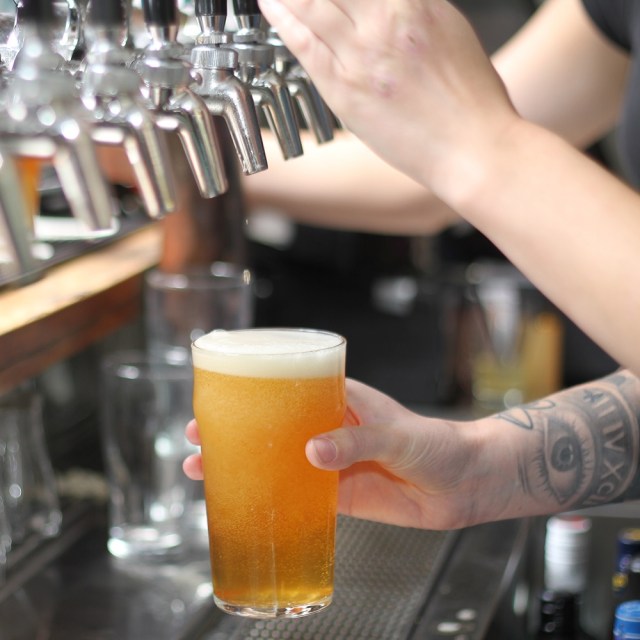
Welcome to Homebrew Week!
Each day this week, Beer & Brewer will be uploading an article dedicated to homebrewing and on Friday, you can expect an e-newsletter collating all the stories of the week.
As this is our first Homebrew Week, we thought we’d start at the beginning and take a look at how people can get into homebrewing. According to the Beer Cartel Homebrew Survey in 2017, not knowing where to start was the greatest barrier to people getting into homebrewing (space, money and time are the other major obstacles), so let’s offer some advice. What do budding homebrewers need to know? Where can they find equipment, ingredients and assistance?
Alex Levi, store manager of homebrew shop The Hop + Grain, highlights three key pieces of advice for anyone looking to start homebrewing:
- “RESEARCH! A little research online before coming into your local homebrew store can answer many questions very quickly, though friendly brewshop staff are always up to answer any more questions about what kind of brewing you’re wanting to start with or advice on recipes, cleaning packaging, etc.
- “SPACE! Consider what kind of room you have before building your home brewery – the space you have at home for fermentation equipment and potentially the size of your stove top or outdoor area will affect the size of your batches.
- “CLEAN! Be prepared to clean and clean and clean. Pro or amateur brewer will forever be at the mercy of the meticulous nature of cleanliness that brewing great beer demands. If you don’t think it’s clean (enough) then clean it again!”
Ingredients and kit
To make your own beer, you’re going to need your own ingredients and equipment, and there are many options available to you. However, there is no need to dive in at the deep end when you can enjoy a paddle in the shallower section. Having an understanding of your own limitations at first will ensure that you aren’t stressing yourself out trying to make something incredibly complicated with tiny margins for error. There are plenty of ways to simplify the brewing process. Using extract rather than all-grain takes out plenty of potential headaches all while producing a quality finished product. Talk to other homebrewers, read up online and in books and find the equipment and ingredients that will work for you.
“You will make better beer when you’re enjoying yourself,” says John Preston, founder of Grain & Grape in Footscray, Victoria. “Everyone has their own way of doing things and some people are more strident than others when it comes to offering advice. Find a method that you like the look of and run with it. If you stick to the basic rules, you will make great beer.”
However, regardless of the level at which you are brewing, it is critical to maintain quality control. This extends to how you look after and use your equipment, how you store and treat your ingredients, but also what you purchase in the first place. Talk to people about what ingredients work best for their beers and look to learn as much as you can about the chemistry behind successful brewing.
“A great brewer, like a great chef, understands how important the ingredients are to the final result,” says Abi Dickinson, director of LaMotte Pacific, which manufactures BrewLab test kits to measure the quality of the water used to brew beer. “The first step is to make sure you are using the best possible ingredients, and beer is 90% water. The quality and mineral content of your brewing water can have a huge impact on the flavour of your beer. The first step to brewing great beer is to understand what is in your water and how this impacts the taste of your beer. Great beer starts with a knowledgeable brewer.”
Be careful and have fun
Unfortunately, even the finest ingredients can easily be turned into undrinkable mush after the simplest mistake. Cleanliness and temperature are the two core factors in brewing that can never receive enough attention – if the kit’s not clean then the beer can get infected and ruined, if the temperature’s too high, it can kill the precious yeast. There will always be ways for you to improve your brewing and, like learning an instrument or a language, it will take time.
“Sanitise. Again. Then again,” says Angus Kingston, president of the South Australia Brewing Club. “Keep an eye on fermentation temperature. Be kind to your yeast. Learn about pitch rates and good yeast health. Study the strain you’re using and how it works best. We all make mistakes, but there’s plenty to learn from them. Overall, be patient. Give it time.”
Ultimately, though, homebrewing is a hobby and should be treated as such. It should be good fun, offering opportunities to connect with people, drink great beer and share stories. Don’t get disheartened by the challenges that you might face or the mistakes you might make. Every homebrewer – even every pro brewer – makes mistakes. They’ll normally be part of a funny story a few weeks down the line. Always be learning, always be having fun, and always be enjoying a tasty home-made beer – those are three rules of homebrewing to live by!
“Just start,” says professional brewer and brewing educator Steve ‘Hendo’ Henderson. “Have fun. Make mistakes. Enjoy it over the long term for the awesome hobby that it is. I always say that the difference between a good brewer and a great brewer is two things: measure and control. Plan your brewing in advance, take measurements and keep good records. That way, if you make an amazing beer, you can repeat it and brew it again!”











